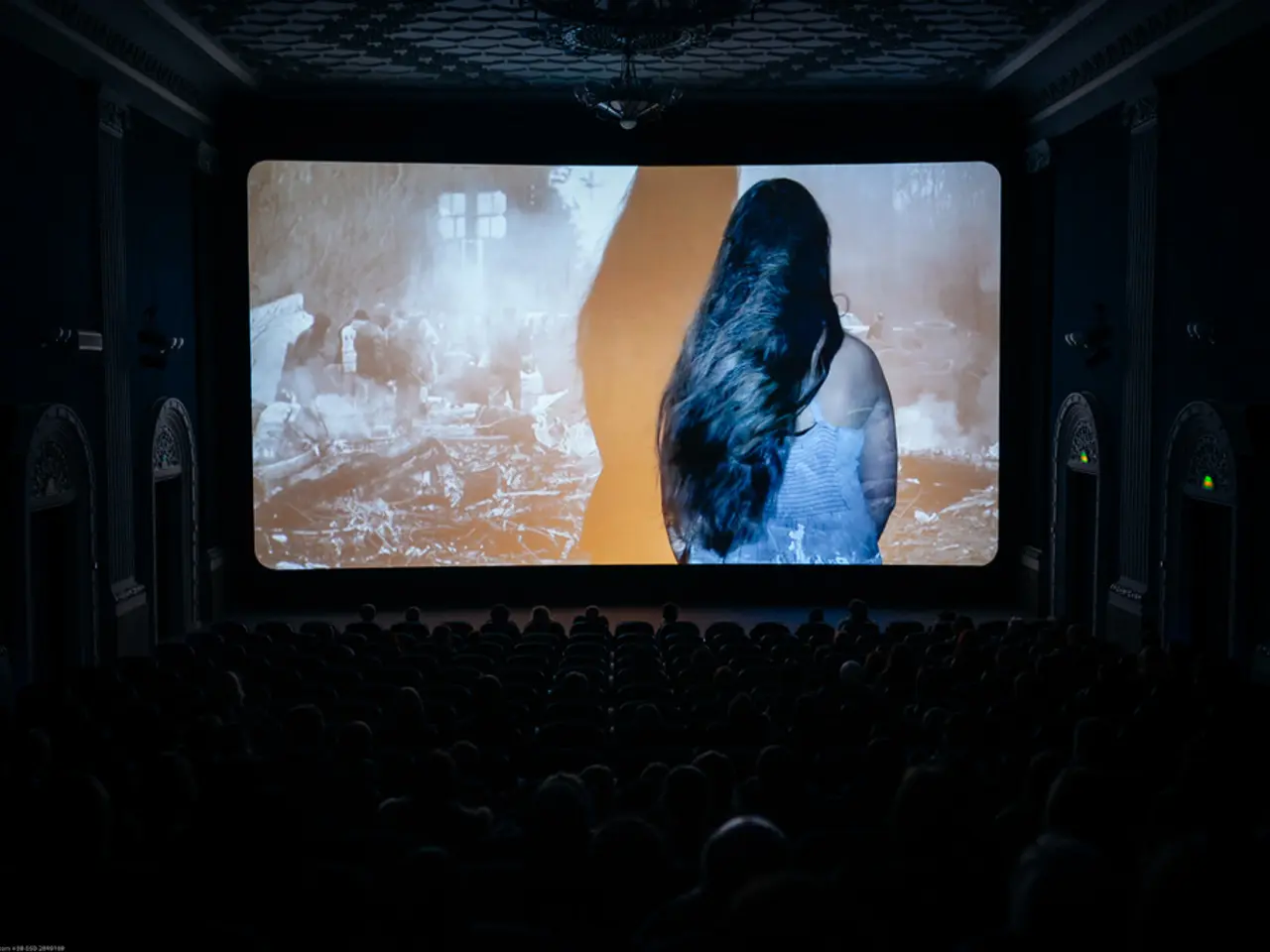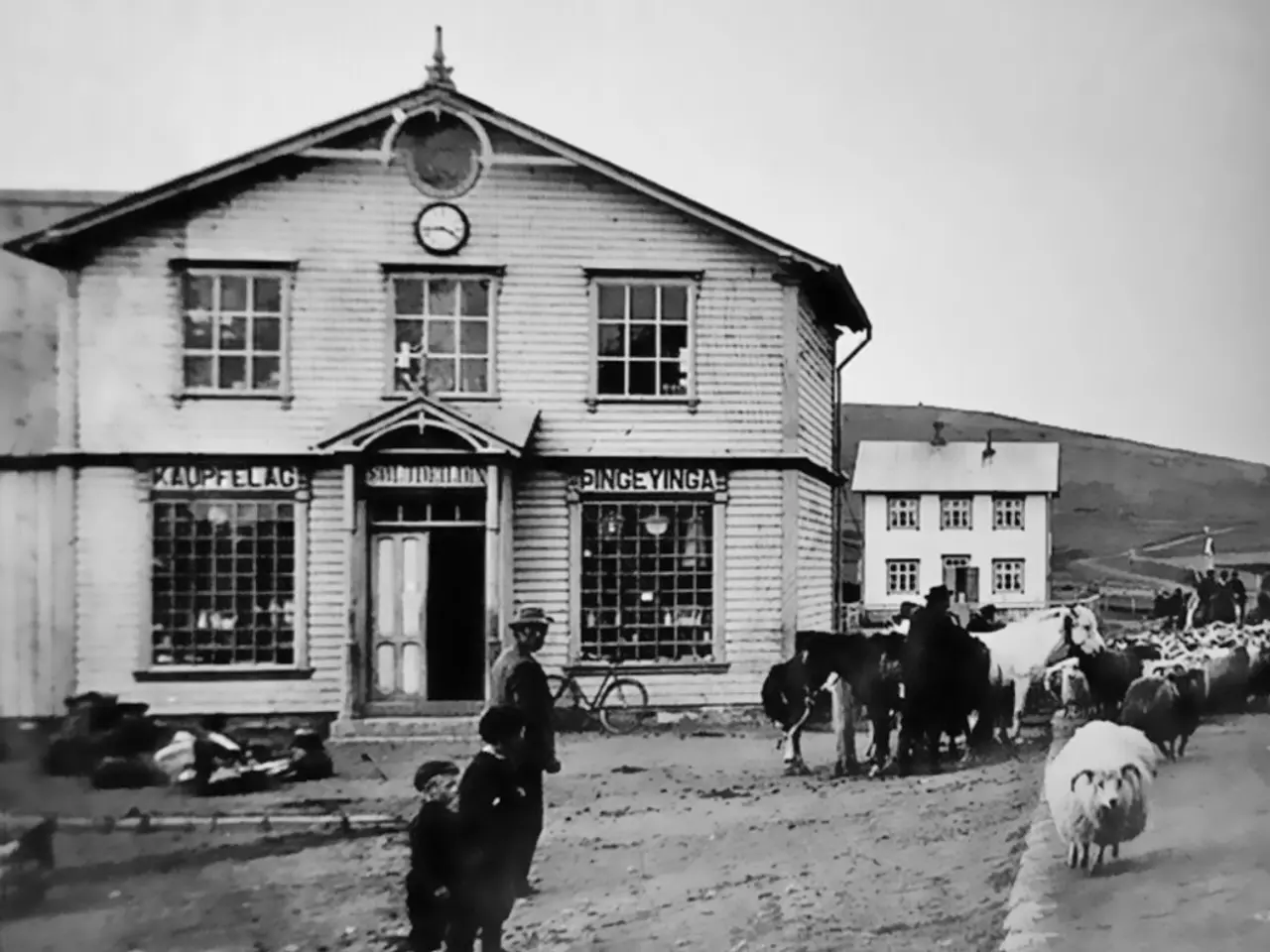Cinematographic Strategies Influence Audience Perception in the Given Movie
In the world of filmmaking, the art of storytelling is not just limited to the script or dialogue. A myriad of cinematic techniques, such as camera angles, lighting, sound design, and editing, significantly shape audience perception and emotional engagement. These techniques manipulate visual and auditory cues to guide viewers' feelings and focus, creating a multisensory experience that immerses audiences and makes storytelling more impactful.
Camera Angles
The way a scene is framed can greatly influence how characters and scenes are perceived. Low-angle shots, for instance, make subjects look powerful or intimidating, enhancing feelings of dominance or awe. On the other hand, high-angle shots create vulnerability or smallness, fostering empathy or tension. Eye-level shots offer neutrality, grounding viewers, while Dutch tilts (slanted angles) cause psychological unease or tension, intensifying suspense or reflecting characters’ inner turmoil.
Lighting
Lighting sets the mood and emotion through contrasts and placement. High-contrast lighting creates dramatic tension with deep shadows and bright highlights, often used in thrillers or noir to build suspense. Soft, diffused lighting, on the other hand, evokes warmth and intimacy, suitable for romantic or calm scenes. Strategic lighting angles, such as a key light at 45 degrees, highlight facial expressions and texture, while fill and backlights manage shadows and separate subjects from backgrounds, subtly guiding emotional responses and narrative focus.
Sound Design
Though not detailed in the retrieved documents, sound design is well-known in film theory. It complements visuals by setting atmosphere, cueing emotions (fear, joy, suspense), and enhancing immersion, thus reinforcing viewers' emotional reactions.
Editing
Editing shapes the film’s rhythm and emotional pacing. Techniques like slow motion amplify key moments by drawing attention and allowing viewers to absorb emotional detail deeply. Pacing and cuts can build tension or provide relief, directly affecting how engaged or emotionally reactive the audience feels.
Together, these techniques craft a compelling narrative that resonates deeply with audiences. Film directors use them intentionally to highlight psychological states, emphasize power dynamics, and evoke specific moods that align with the narrative and character arcs.
Natural lighting creates a sense of realism and authenticity. Juxtaposing contrasting scenes can enhance thematic elements and deepen the viewer's understanding of character motivations and plot developments. Abrupt cuts can create a jarring effect that heightens suspense, while transitions, such as fades and dissolves, can signify the passage of time or a change in location.
The pace of editing dictates the film's rhythm, impacting the viewer's emotional journey. In film, strategic use of lighting plays a crucial role in establishing the emotional tone and guiding the audience's emotional responses. Lighting choices, such as low-key lighting for suspense or foreboding, chiaroscuro for highlighting conflict or moral ambiguity, and high-key lighting for feelings of joy, openness, or innocence, are meticulously designed to align with the narrative and character arcs.
Manipulating light, filmmakers effectively mold the viewer's experience. Cross-cutting builds tension by interweaving multiple storylines, while color gels can evoke specific emotions, such as red for passion or blue for melancholy. A long take immerses the viewer in a moment, creating a sense of real-time progression.
In conclusion, the strategic use of camera angles, lighting, sound design, and editing significantly affects the audience's understanding and emotional engagement with a film's story. These techniques are indispensable tools in the art of cinema, enhancing the storytelling experience and making films more immersive and impactful.
[1] Source for further reading on cinematic techniques and their impact on emotional engagement. [2] Source for further reading on the use of camera angles in filmmaking. [3] Source for further reading on the role of lighting in film. [4] Source for further reading on the importance of sound design in cinema.
- Film directors employ camera angles artfully to portray characters and scenes in a certain light, with low-angle shots conveying power or intimidation, high-angle shots eliciting vulnerability or empathy, and Dutch tilts causing psychological unease.
- Lighting significantly contributes to the film's mood and emotion, as high-contrast lighting creates dramatic tension, soft, diffused lighting evokes warmth and intimacy, and strategic angles, such as a key light at 45 degrees, highlight facial expressions and texture.
- Sound design is integral to the filmmaking experience, as it complements visuals by setting atmosphere, cueing emotions, and reinforcing viewer reactions, although details may not be included in certain documents.
- Editing plays a vital role in shaping the film's rhythm and emotional impact, with techniques like slow motion amplifying key moments, pacing and cuts building tension or providing relief, and transitions such as fades and dissolves signifying changes in time or location.
- In animated films, scene transitions can be particularly imaginative, such as morphs, transformations, or transitions through portals, all while maintaining the film's rhythm and emotional pacing.
- Data-and-cloud-computing and technology have revolutionized the film industry, enabling filmmakers to edit complexFILM scenes with precision, and allowing for real-time collaboration and communication among team members.
- The entertainment sector, including movies and TV, continues to evolve, with new genres and techniques emerging, such as virtual reality and immersive storytelling, made possible by advancements in technology and the increased availability of high-quality data.




